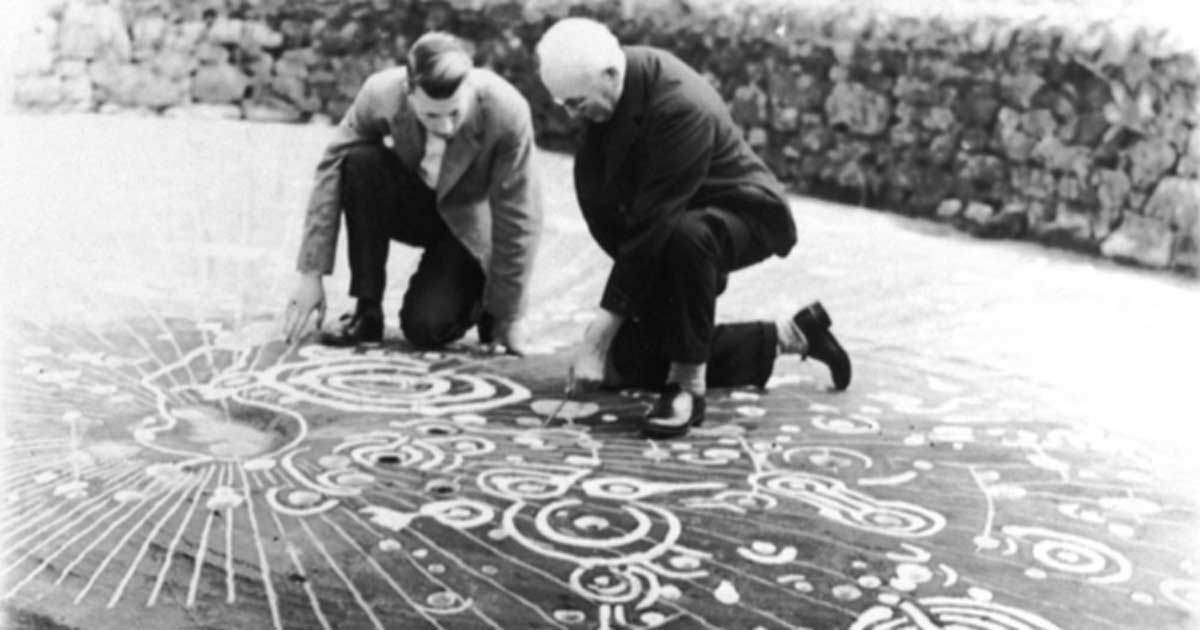Anthropology
Related: About this forumWill the Secrets Behind the 5000-year-old Cochno Stone Finally Be Solved?
Will the Secrets Behind the 5000-year-old Cochno Stone Finally Be Solved?
8 September, 2016 - 00:49 aprilholloway

With dozens of grooved spirals, carved indentations, geometric shapes, and mysterious patterns of many kinds, the Cochno Stone, located in West Dunbartonshire, Scotland, is considered to have the finest example of Bronze Age cup and ring carvings in the whole of Europe. Yet, for the last 50 years it has laid buried beneath several feet of earth and vegetation in what was a desperate attempt at the time to protect it from vandals. However, the famous stone is set to be unearthed once more to finally embark on an in-depth study of its enigmatic symbols in the hope of learning some of its secrets.
The Scotsman reports that the enormous stone will be uncovered over the next three weeks and archaeologists will then use 3D-imaging technology to make a detailed digital record of the stone’s markings in the hope that it “will provide more information on the stone’s history, purpose and the people who created it about 5,000 years ago”.
The stone, which measures 42ft by 26ft, was first discovered by the Rev James Harvey in 1887 on farmland near what is now the Faifley housing estate on the edge of Clydebank. It is covered in more than 90 carved indentations, known as ‘cup and ring’ marks.
Cup and ring marks are a form of prehistoric art consisting of a concave depression, no more than a few centimetres across, carved into a rock surface and often surrounded by concentric circles also etched into the stone. The decoration occurs as a petroglyph on natural boulders and outcrops, and on megaliths such as the slab cists, stone circles, and passage graves. They are found mainly in Northern England, Scotland, Ireland, Portugal, North West Spain, North West Italy, Central Greece, and Switzerland. However, similar forms have also been found throughout the world including Mexico, Brazil, and India.
More:
http://www.ancient-origins.net/news-history-archaeology/will-secrets-behind-5000-year-old-cochno-stone-finally-be-solved-006607?nopaging=1
GoDawgs
(267 posts)In other words the reason they appear in so many ancient cultures are that they are innate for all people? Or was this an imagery or language of symbols originating in one culture &passed from cultures to their neighbors? What are the similarities to meso-american glyphs?
Also, thank you for not posting the 'ancient alien astronauts' guy.
Judi Lynn
(160,545 posts)Judi Lynn
(160,545 posts)5,000 year old Prehistoric art panel uncovered
Issued: Thu, 08 Sep 2016 05:00:00 BST
The “most important Neolithic cup and ring marked rock art panel in Europe” is being unearthed for the first time in 50 years on the edge of a housing estate in Clydebank near Glasgow.??
The Cochno Stone, dating back to 3000BC, and one of the best examples of Neolithic or Bronze Age cup and ring markings in Europe, is being fully excavated for the first time since it was buried in 1965 to protect it from vandalism.
The stone, which lies on land next to a housing estate near Faifley, in West Dunbartonshire, is regarded as one of the UK’s most important, but also one of its most neglected, prehistoric sites.?
The excavation will provide the opportunity to use cutting-edge 3D imaging technology to make a detailed digital record of the site, which should shine more light on the stone’s history, its purpose and the people who created the artwork around 5,000 years ago.
More:
http://www.gla.ac.uk/news/headline_484104_en.html
Judi Lynn
(160,545 posts)5,000-Year-Old Swirling Rock Art in Scotland Remains a Mystery
By Owen Jarus, Live Science Contributor | September 28, 2016 07:15am ET
Archaeologists in Glasgow, Scotland, briefly excavated and then reburied a 5,000-year-old slab of stone that contains incised swirling geometric decorations.
The Cochno Stone, which measures 43 feet by 26 feet (13 by 8 meters), contains swirling decorations, also called "cup and ring marks." The stone and its decorations have been known to people in the area since at least the 19th century. Decorations similar to these swirls have been found at other prehistoric sites around the world; however, the examples incised in the Cochno Stone are considered to comprise "one of the best examples" of such art in Europe, according to a statement by the University of Glasgow, which led the new study.
The stone slab was fully unearthed in West Dunbartonshire by Rev. James Harvey in 1887. By 1965, the stone had been vandalized with graffiti and damaged by the elements, so a team of archaeologists buried it beneath the dirt in order to protect the artwork . This summer's two-week re-excavation allowed archaeologists to use modern-day surveying and photography techniques to better record the artwork.
For instance, digital-scanning and mapping experts from the Factum Foundation used cutting-edge 3D-imaging technology to make a detailed digital record of the site, according to the university statement.
More:
http://www.livescience.com/56287-ancient-cochno-stone-reburied.html